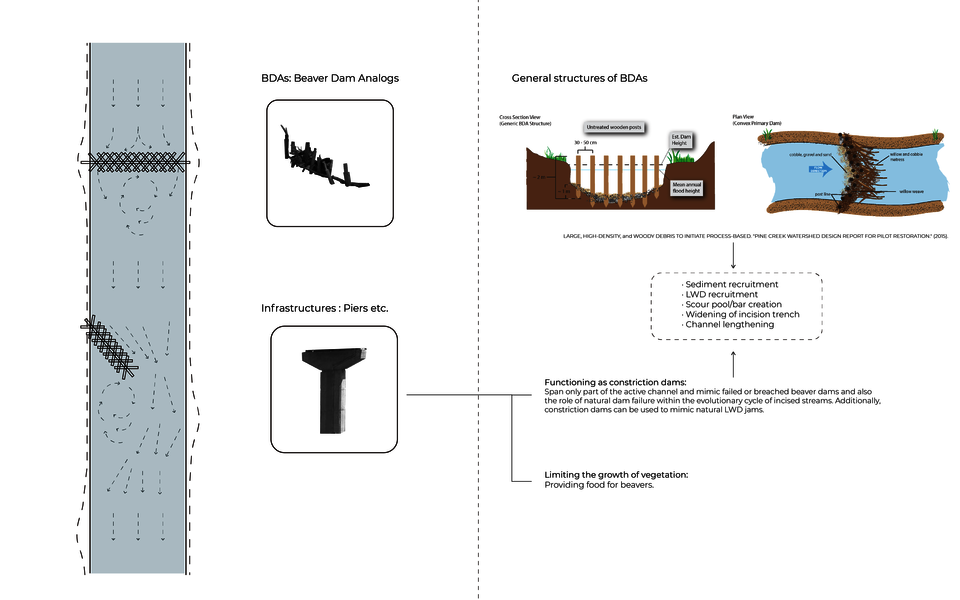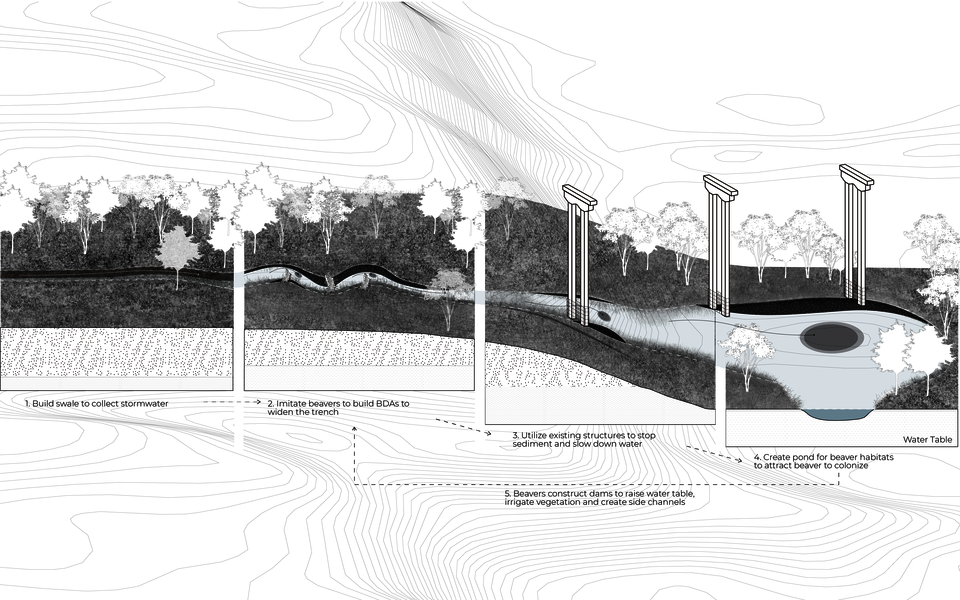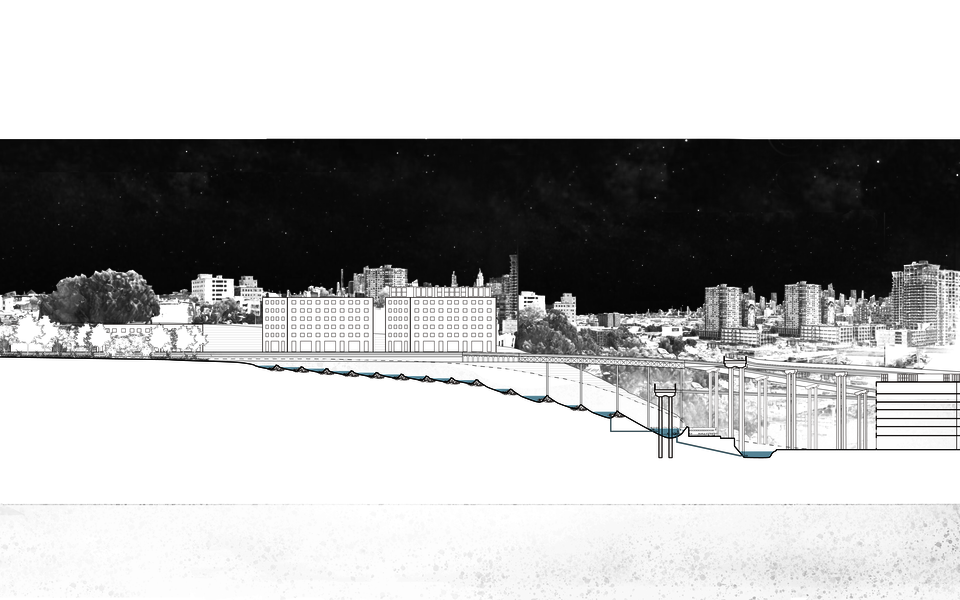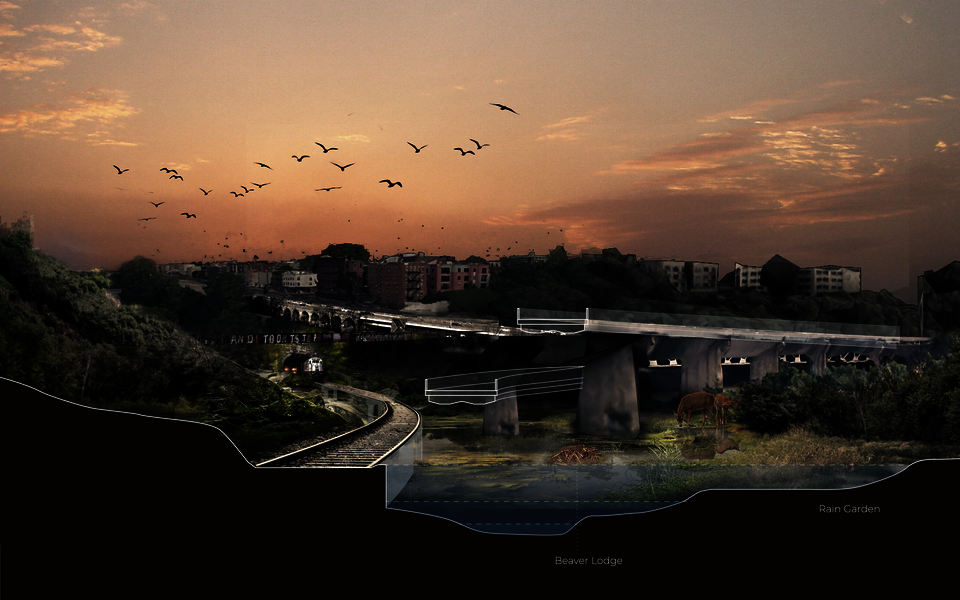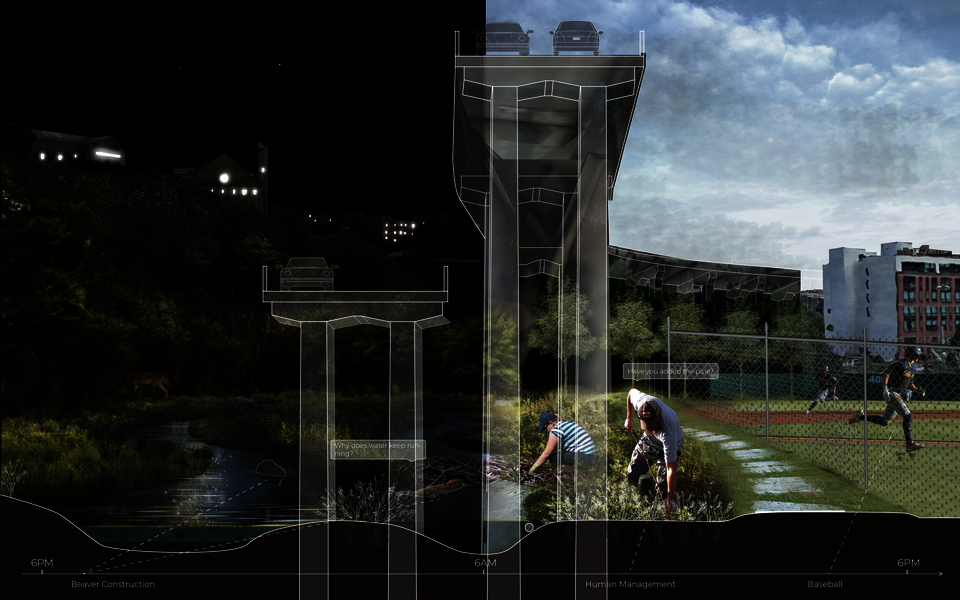Yu Xiao
Zoopolis: Repurpose Urban Infrastructure to Welcome Invisible Neighbors
For a long time, humans have taken a dominant role in shaping the world to fit what is best for us, while claiming vast cities and our territories. However, shrinking natural habitats together with the availability of resources and shelter has attracted abundant wildlife to cities. These animal species have adjusted their habits to adapt to the urban environments and avoid direct contact with humans, becoming invisible inhabitants of the city. Despite their initial harmonious coexistence, in recent decades, increasing wildlife sightings – often causing conflict or panic – bring those liminal animals to public attention. This situation encourages us to reframe how cities could foster coexistence between human and non-human communities.
In addition to calling for the protection of these species’ rights to inhabit in the city, this thesis considers liminal animals as our urban co-residents by suggesting their responsibility to face the challenges together with human communities. The work uses the cooperation between beavers and human beings to help address the flooding issues in some cities, by repurposing infrastructures to invite beavers’ participation in their engineering. The eventual goal is to understand how we can create a zoopolis –a sort of urban commons where both human and non-human communities have the right to live and contribute to life in the city.
Image
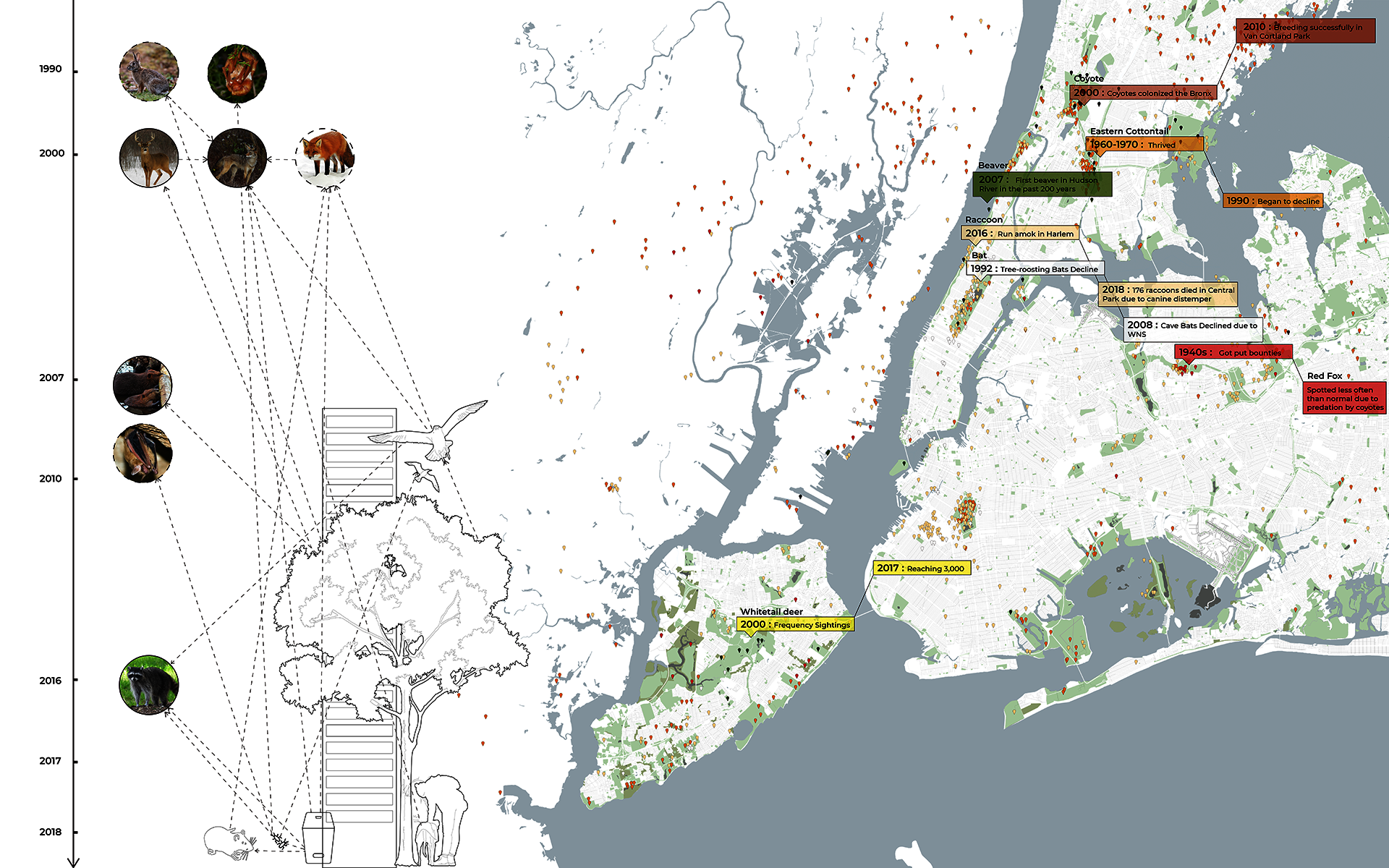
Recovery of Liminal Animals in Recent Decades
Adobe Suites
2022
Shrinking natural habitats together with the availability of resources and shelter have attracted abundant wildlife to cities. These animal species have adjusted their habits to adapt to the urban environments and avoid direct contact with humans, becoming invisible inhabitants of the city.
Image
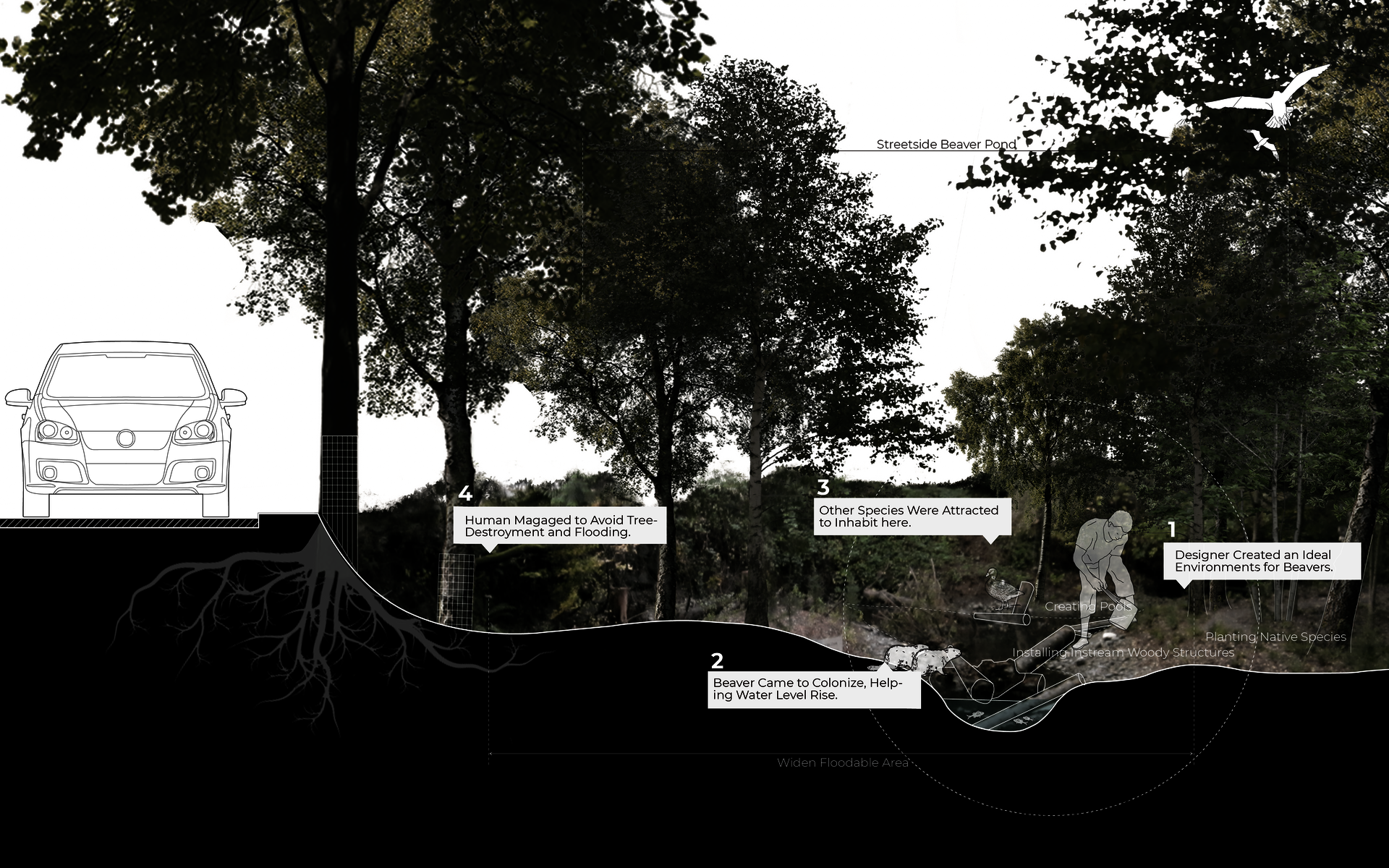
Case Study of Human-Beaver Cooperation in Seattle
Adobe Suites
2022
The Thornton Creek project in Seattle shows the possibilities of Human-Beaver Cooperation, where designers prepared the site for beaver colonization and made use of their contribution for better community environments.
Image
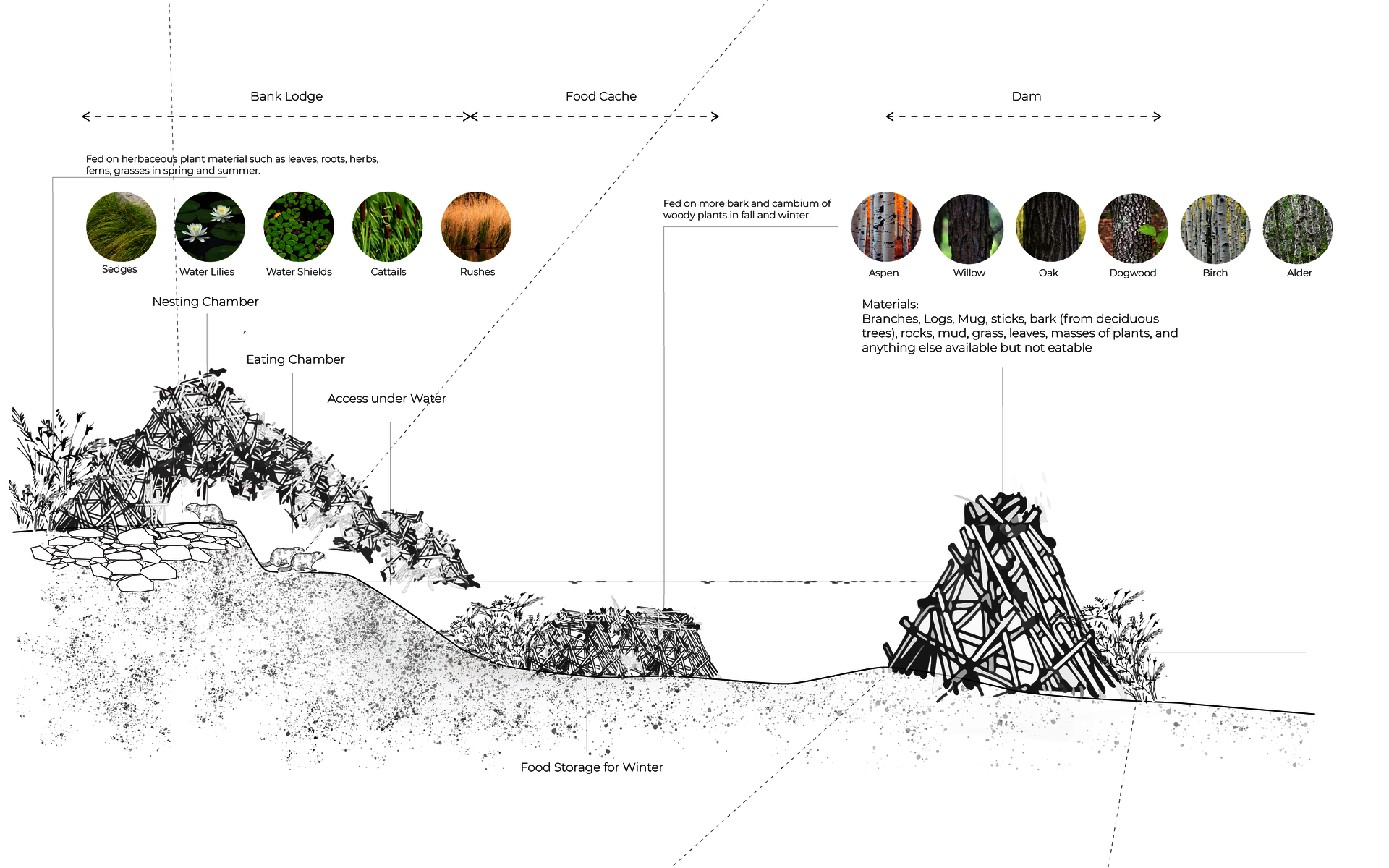
Beaver Colonization
Adobe Suites
2022
Once colonizing, beavers will build their lodge on the edge or in the middle of pond with part of it submerged. They build dams to slow down water and guarantee the safety of their lodge.
Image
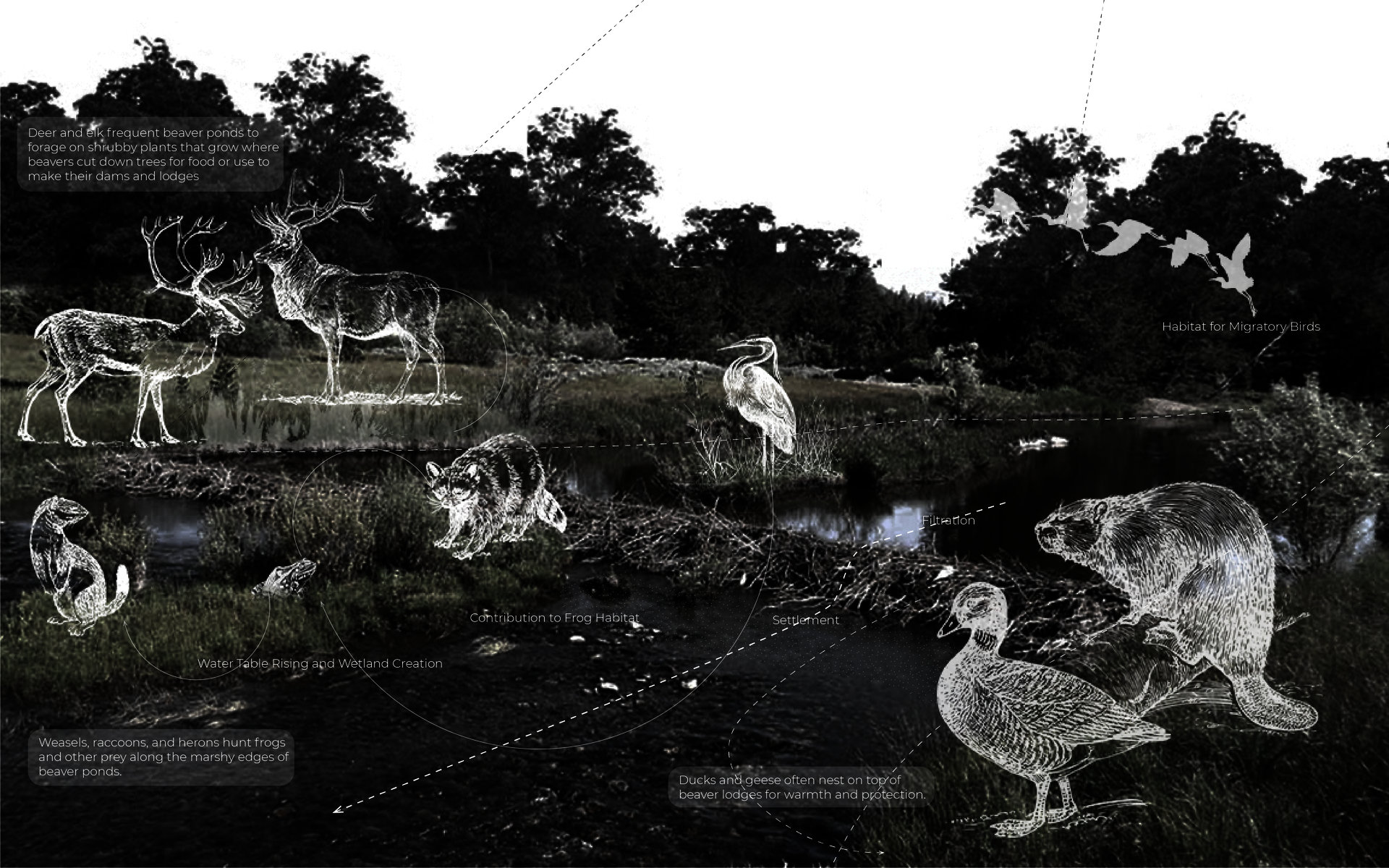
Beaver Contribution to Surrounding Habitat
Adobe Suites
2022
Beavers, as eco-engineers, create habitats for other species.
Image
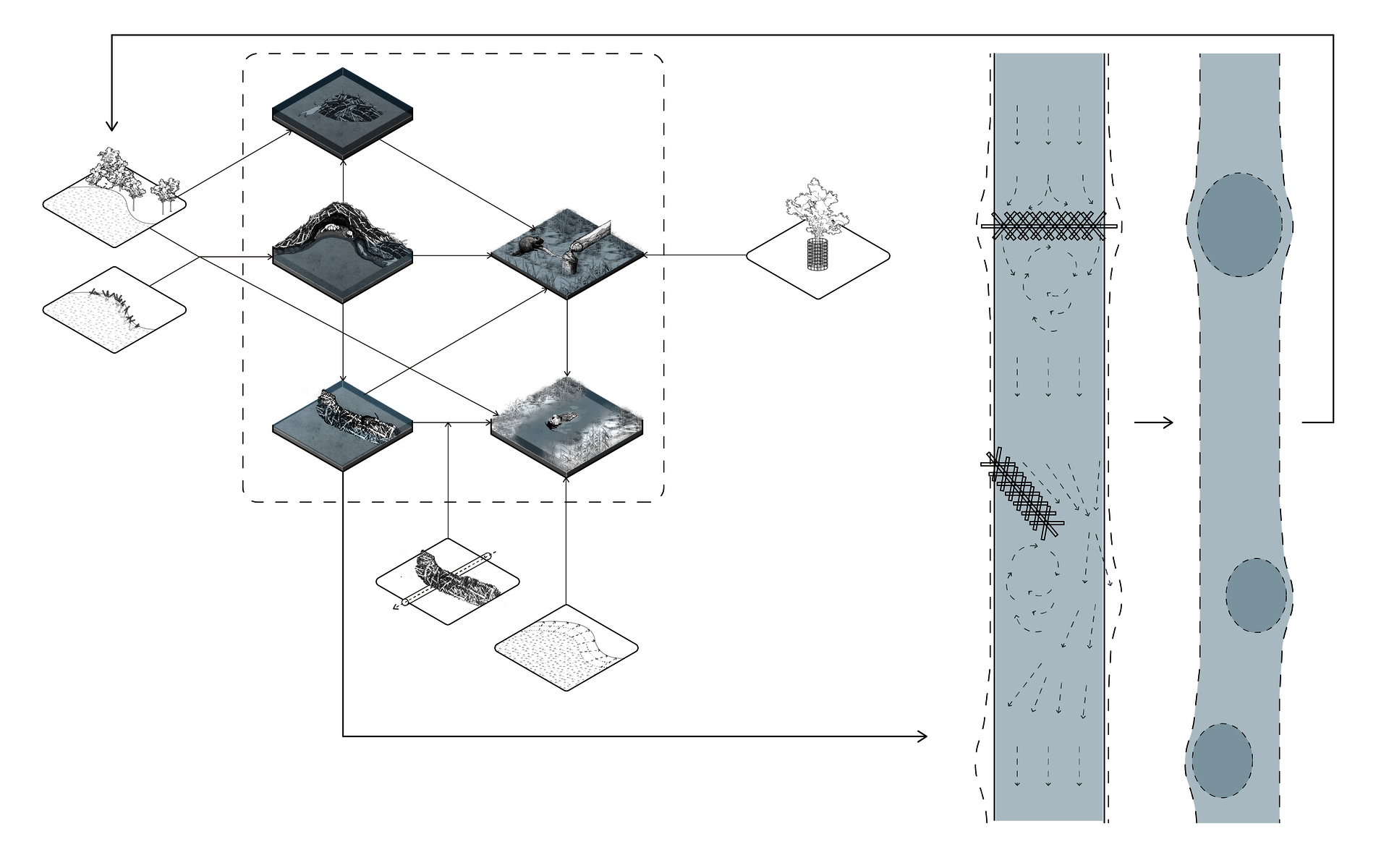
Human-Beaver Coresponding Principles
2022
Assumptions are made about how the cooperation or co-engineering would happen. So once we create a habitat beavers prefer and succeed in inviting them to colonize, they will build their lodge and food cache. The habitat might not be perfect, so they also dam to construct. In this process, they cut trees for materials and food. Though we have planted vegetation for them, there are trees we need to protect ahead of time. Loss of edge vegetation and high water levels due to the dams could result in flooding. We can set a leveling pipe and enlarge the flooding plain to help. The dams help reframe the river bank and create ponds for habitat. We also can learn from this process to prepare the potential habitat for beavers.
- Architecture
- Ceramics
- Design Engineering
- Digital + Media
- Furniture Design
- Global Arts and Cultures
- Glass
- Graphic Design
- Industrial Design
- Interior Architecture
- Jewelry + Metalsmithing
- Landscape Architecture
- Nature-Culture-Sustainability Studies
- Painting
- Photography
- Printmaking
- Sculpture
- TLAD
- Textiles
